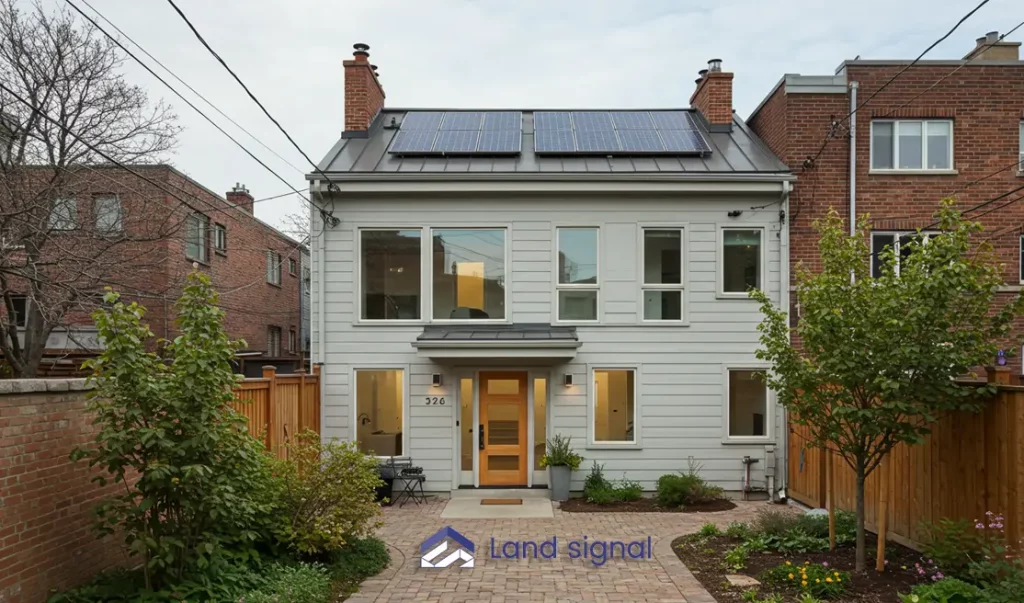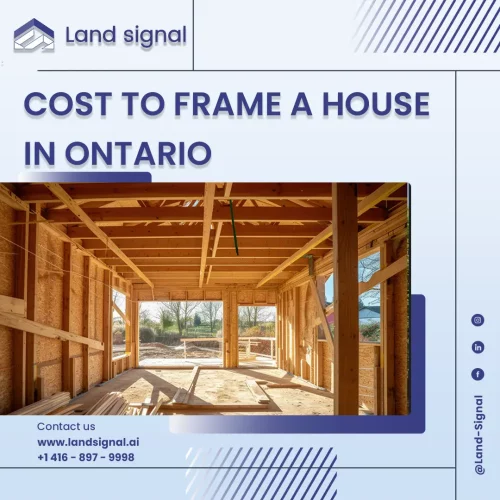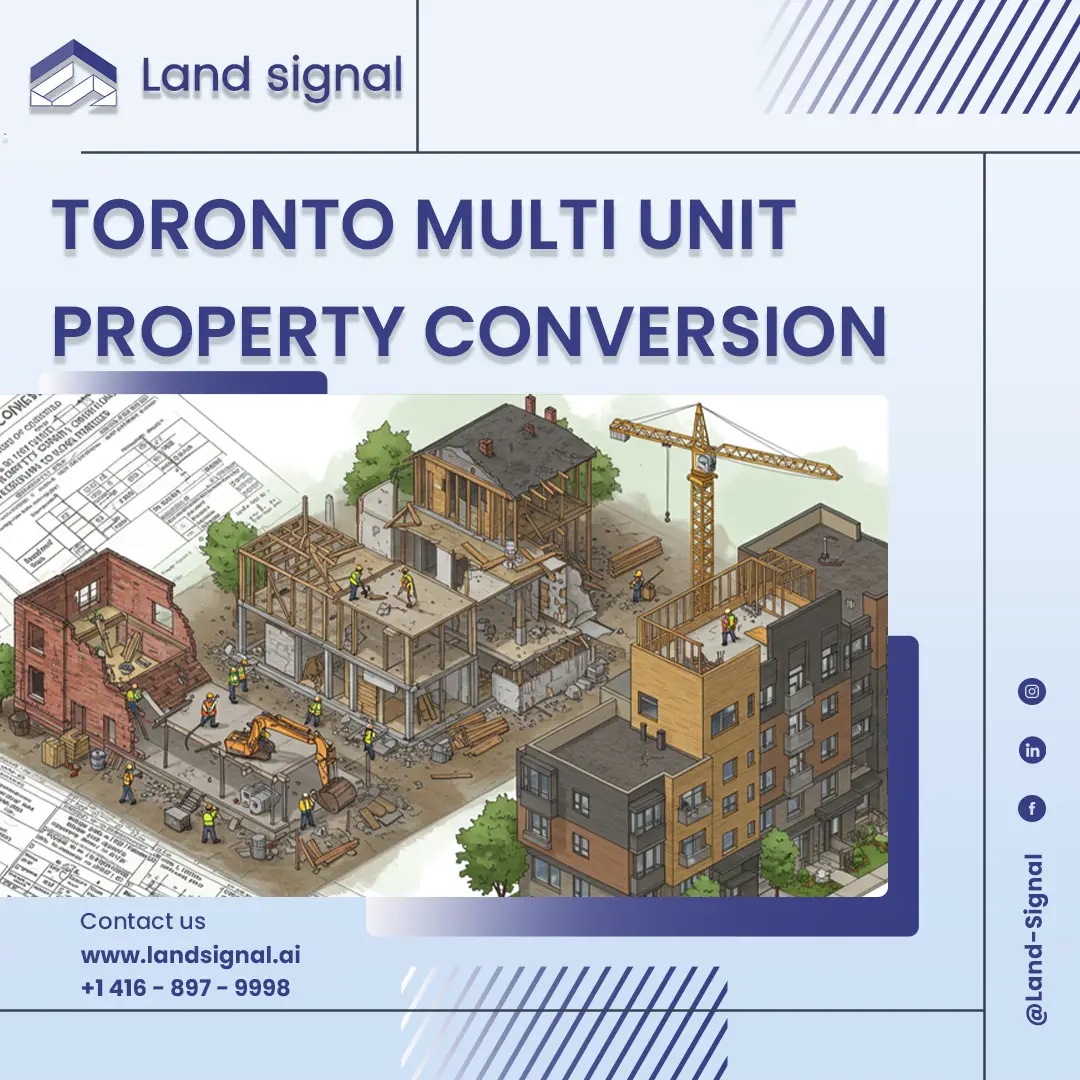Laneway houses, also known as garden suites or coach houses, are becoming increasingly popular in Toronto as a way to address housing affordability and density challenges. These self-contained dwelling units, situated on the same property as a primary residence and accessed via a laneway, offer a range of benefits, from providing additional living space for family members to generating rental income. However, financing a laneway house project can be complex, requiring careful planning and a thorough understanding of the available options.
If you’re considering a laneway house, Land Signal can make the process much easier. They specialize in laneway suite and garden home permitting, ensuring that each design meets Toronto’s specific requirements and regulations. Their expertise in navigating the permitting process can help you avoid common delays and complications, allowing you to focus on the bigger picture of your project.
This article provides a comprehensive guide to financing laneway houses in Toronto, covering key financing options, the steps involved in securing financing, navigating city regulations, addressing potential challenges, and choosing the right professionals for your project.
Start Your Project with Confidence
At Land Signal, we assist with construction and renovation permits, as well as Garden House and Laneway Suite designs. Let our experts guide you through every step.
Why Invest in a Laneway House in Toronto?
Several factors contribute to the growing popularity of financing laneway houses in Toronto. These factors range from addressing personal housing needs to contributing to the city’s evolving urban landscape and providing financial benefits.
- Increased Living Space: Laneway houses provide valuable additional living space for homeowners. This can be used to accommodate extended family, create a home office, or provide a separate living area for adult children or aging parents. The flexibility offered by a laneway house allows homeowners to adapt to changing family dynamics and lifestyle needs.
- Rental Income Potential: Laneway houses offer an excellent opportunity to generate rental income, helping offset mortgage payments and other housing expenses. In a city like Toronto, where rental demand is consistently high, a laneway suite Toronto can provide a steady stream of income, making homeownership more affordable and potentially generating long-term financial benefits.
- Increased Property Value: The addition of a well-designed and functional laneway house can significantly increase the overall value of a property. This added value can be beneficial for homeowners looking to build equity and potentially sell their property in the future.
- Addressing Housing Affordability: Laneway houses contribute to increasing housing density in established neighborhoods, offering a more affordable housing option compared to purchasing a separate property. This can be particularly attractive for first-time homebuyers or individuals seeking more affordable housing options in desirable urban areas.
- Sustainable Urban Development: Laneway houses promote sustainable urban development by making efficient use of existing infrastructure and minimizing urban sprawl. By utilizing underutilized laneway spaces, these units contribute to creating more vibrant and livable neighborhoods.
Key Financing Options for Laneway Houses
Financing laneway houses in Toronto project requires careful consideration of the various financing options available. Each option has its own advantages and disadvantages, and choosing the right one depends on individual circumstances and financial goals.
Traditional Mortgages
Traditional mortgages can be used to finance the construction of a laneway house, but they often require a larger down payment and may have stricter qualification criteria compared to financing for a primary residence. It’s essential to shop around and compare mortgage rates and terms from different lenders to find the most favorable option.
- Construction Mortgages: Specifically designed for new construction projects, these mortgages provide staged funding as the project progresses. This allows homeowners to access funds as needed throughout the construction process.
- Refinancing: Homeowners can refinance their existing mortgage to access equity and use the funds for financing laneway houses in Toronto construction. This option allows homeowners to consolidate their debt and potentially secure a lower interest rate.
Home Equity Line of Credit (HELOC)
A HELOC allows homeowners to borrow against the equity they have built in their primary residence. This can be a flexible and accessible option for financing laneway houses in Toronto projects, offering access to funds as needed. However, it’s important to manage the HELOC responsibly to avoid accumulating excessive debt.
- Accessibility: HELOCs are generally easier to qualify for than traditional mortgages, making them a viable option for homeowners who may not meet the stricter criteria of a mortgage.
- Flexibility: Homeowners can draw funds as needed, allowing them to manage their cash flow effectively throughout the construction process.
- Interest Rates: HELOC interest rates are typically variable, meaning they can fluctuate over time, potentially impacting the overall cost of borrowing.
Government Grants & Incentives
While not directly financing options, various government grants and incentives can help offset the costs associated with building an energy-efficient and sustainable laneway house. These programs can reduce the overall financial burden of the project and encourage environmentally responsible building practices.
- Federal Programs: Programs like the Canada Greener Homes Grant offer financial assistance for energy-efficient upgrades, which can be applied to laneway house construction.
- Provincial Programs: The province of Ontario may offer specific programs and incentives for energy-efficient construction and sustainable building practices.
- Municipal Programs: The City of Toronto may have specific programs and incentives aimed at promoting laneway housing development and encouraging sustainable building practices.
Private Lenders and Alternative Financing
For homeowners who may not qualify for traditional financing options, private lenders and alternative financing sources can provide access to capital for laneway house projects. However, these options often come with higher interest rates and fees, so it’s crucial to carefully evaluate the terms and conditions before proceeding.
- Private Mortgages: Private lenders offer mortgages with more flexible qualification criteria, but they typically come with higher interest rates and shorter terms.
- Construction Loans: Specialized construction loans are designed specifically for construction projects and offer staged funding as the project progresses.
- Personal Loans: While not ideal for large-scale projects, personal loans can be used for smaller-scale renovations or to cover specific expenses related to the laneway house construction.
Steps to Secure Financing Laneway Houses in Toronto
Securing financing for a laneway house project involves a series of steps, from assessing your financial needs to finalizing the loan agreement.
Understand Your Financing Needs
Before applying for financing, it’s essential to determine the total cost of the project, including design fees, architectural drawings, engineering reports, construction costs, permits, development charges, and other associated expenses such as insurance and legal fees. Creating a detailed budget with a contingency buffer for unforeseen expenses will help you determine how much financing you need and ensure you can comfortably afford the project without undue financial strain. Accurate cost estimation is crucial for successful project completion.
Research Your Financing Options
Thoroughly research the various financing options available, comparing interest rates, fees, loan terms, and repayment schedules from different lenders, including banks, credit unions, and private lenders. Consider your financial situation, risk tolerance, and long-term financial goals, and choose the option that best aligns with your needs and provides the most favorable terms. Consulting with a mortgage broker can provide access to a wider range of lending options.
Application Process
Once you’ve chosen a financing option, complete the loan application process diligently, providing all necessary documentation and information accurately and promptly. Be prepared to provide details about your income, employment history, credit history, assets, liabilities, and the specifics of your laneway house project, including detailed plans, specifications, and cost estimates. A well-prepared application can expedite the approval process.
Closing the Deal
After your loan application is approved, review the loan agreement meticulously, ensuring you understand all the terms and conditions, including interest rates, fees, repayment schedules, and any prepayment penalties, before finalizing the deal. Work closely with your lender, legal professionals, and financial advisors to ensure a smooth closing process and address any potential issues that may arise. Seek professional advice to clarify any ambiguities in the loan agreement.
Read More: Laneway Suite Cost Toronto | What You Need to Know
Choosing the Right Professionals for Your Laneway Project
Working with experienced professionals is crucial for a successful laneway house project.
- Architects and Designers: A qualified architect or designer with experience in laneway house projects can help you create a functional, aesthetically pleasing, and sustainable laneway suite design Toronto that meets your specific needs, preferences, and budget while complying with all applicable city regulations, zoning bylaws, and building codes. They can also provide valuable insights into material selection, energy efficiency, and sustainable building practices. A well-designed laneway house can enhance property value and improve quality of life.
- Contractors: Choosing a reputable, licensed, and experienced contractor with a proven track record in laneway house construction is essential for ensuring quality construction, managing the project effectively within budget and timeline, and coordinating various trades and subcontractors. Obtain multiple bids from different contractors, check references, and verify insurance and licensing before making a decision. A reliable contractor can minimize construction delays and ensure quality workmanship.
- Legal Professionals: A lawyer specializing in real estate and construction law can guide you through the complex legal aspects of the project, including navigating zoning bylaws, obtaining permits, reviewing contracts with contractors and suppliers, and ensuring compliance with all applicable regulations. They can also assist with financing agreements and address any legal disputes that may arise during the project. Legal expertise can protect your interests and ensure a legally sound project.
- Financial Advisors: A qualified financial advisor with expertise in real estate financing can help you assess your financial situation, explore various financing options, including mortgages, loans, and lines of credit, and develop a sound financial plan for your laneway house project that aligns with your overall financial goals. They can also provide guidance on budgeting, cost management, and tax implications. Sound financial planning is crucial for successful project completion and long-term financial stability.
Conclusion
Financing laneway houses in Toronto requires careful planning, thorough research, and a comprehensive understanding of the available financing options, complex city regulations, and potential challenges. From the initial stages of conceptualization and design to the final construction and occupancy, each step demands careful consideration and informed decision-making. This includes a thorough assessment of one’s financial capacity, exploring various financing options such as construction loans and home equity lines of credit, and understanding the intricacies of loan terms, interest rates, and repayment schedules.
By carefully considering the factors outlined in this article, homeowners can successfully navigate the financing process, overcome potential obstacles, such as navigating complex zoning bylaws and securing necessary permits, and ultimately build a valuable addition to their property that enhances their living space, generates potential rental income, and contributes to the city’s evolving urban landscape. Furthermore, engaging with experienced professionals, such as architects, contractors, and legal advisors, can provide invaluable support and guidance throughout the entire process, ensuring a smoother and more successful outcome.







